Spleen Disorders
In this chapter, we will discuss a variety of spleen disorders.
The spleen is located inside the abdominal cavity on the upper left side. A normal spleen weighs about 150 grams and is about 11 cm long. Under normal circumstances, your spleen is about the size of your fist and hardly even detectable to touch during a physical examination. It has a rich blood supply and filters high volumes of blood. In the process, it can detect antigens and select damaged and old red blood cells and platelets for destruction.
The spleen consists of red pulp and white pulp within a meshwork of reticular fibers enclosed by a dense connective tissue capsule. Blood vessels, lymph vessels, and nerves enter and leave the spleen through the hilum, an opening in the capsule on the medial side. From the capsule, connective tissue trabeculae extend into the organ. The trabeculae form a path for branches of the splenic artery, from which smaller arteries (central arteries) branch off to enter the pulp.
The main constituents of the spleen, the white and red pulp, form two functionally and morphologically different units. The white pulp consists of lymphatic tissue and monitors the incoming blood for harmful substances. The densely packed heterochromatin of the lymphocyte nuclei is responsible for the dark blue staining observed when sections from normal spleen are stained with HE. Aggregations of lymphocytes envelop the central arteries in a periarterial lymphatic sheath (PALS). These are mainly T-cells. At places, the white pulp expands into greater spherical aggregations to form splenic nodules containing a light germinal center, consisting of proliferating B-cells, surrounding the B-cells is a darker stained mantel zone that marks the border to the red pulp. The splenic nodules appear similar to lymph follicles, except for the presence of a central artery. 
The white pulp is a site of production and maturation of B cells and T cells. B cells in the spleen generate protective humoral antibodies; in certain autoimmune disorders (eg, immune thrombocytopenia [ITP], Coombs-positive immune hemolytic anemias), inappropriate autoantibodies to circulating blood elements also may be synthesized.
The red pulp filters blood to find damaged and old red blood cells and platelets. Cells that are selected for breakdown are phagocytized by splenic macrophages. The abundance of red blood cells, erythrocytes, in the red pulp is accountable for the red, eosin staining observed when stained with HE. The red pulp consists of splenic cords and splenic sinuses. A meshwork of reticular cells and fibres, together with dendritic cells, macrophages, a relatively smaller amount of lymphatic cells and a great number of red blood cells constitute the splenic cords. Branches of the central arteries penetrate the red pulp, where they further branch into smaller macrophage-sheathed capillaries. Within the splenic cords, the red blood cells are exposed to the macrophages and can be selected for the breakdown.
The red pulp removes antibody-coated bacteria, senescent or defective RBCs, and antibody-coated blood cells (as may occur in immune cytopenias such as ITP, Coombs-positive hemolytic anemias, and some neutropenias). The red pulp also serves as a reservoir for blood elements, especially WBCs and platelets. During its culling and pitting of RBCs, the spleen removes inclusion bodies, such as Heinz bodies (precipitates of insoluble globin), Howell-Jolly bodies (nuclear fragments), and whole nuclei; thus, after splenectomy or in the functionally hyposplenic state, RBCs with these inclusions appear in the peripheral circulation. Hematopoiesis may occur in the spleen if an injury to bone marrow (eg, by fibrosis or tumors) allows hematopoietic stem cells to circulate and repopulate the adult spleen (see Primary Myelofibrosis; see Myelodysplastic Syndrome).
Splenomegaly
Splenomegaly is defined as the enlargement of the spleen. In the past, splenomegaly was a clinical finding, but in recent years, imaging studies have also helped to assess for or confirm mild splenomegaly.
The normal spleen is usually not palpable, although it can sometimes be palpated in adolescents and individuals with a slender build. However, an enlarged or palpable spleen is not necessarily of clinical significance. For example, certain individuals with broadly splayed costal margins have readily palpable, but small, spleens.
A spleen weight of 400-500 g indicates splenomegaly, while a weight of more than 1000 g is labelled massive splenomegaly. Poulin et al defined splenomegaly as moderate if the largest dimension is 11-20 cm, and severe if the largest dimension is greater than 20 cm.
If splenomegaly is massive (spleen palpable 8 cm below the costal margin), the cause is usually chronic lymphocytic leukemia, non-Hodgkin lymphoma, chronic myeloid leukemia, polycythemia vera, myelofibrosis with myeloid metaplasia, or hairy cell leukemia.
Splenomegaly can lead to cytopenias, a disorder called Hypersplenism. An enlarged spleen usually doesn’t cause symptoms. It’s often discovered during a routine physical examination. However, it can cause:
An enlarged spleen usually doesn’t cause symptoms. It’s often discovered during a routine physical examination. However, it can cause:
- Pain or fullness in the left upper abdomen that may spread to the left shoulder.
- Feeling full without eating or after eating only a small amount from the enlarged spleen pressing on the stomach.
- Anemia.
- Fatigue.
- Frequent infections.
- Easy bleeding.
Severe pain suggests splenic infarction. Recurrent infections, symptoms of anemia, or bleeding manifestations suggest cytopenia and possible hypersplenism.
Several infections and diseases may cause an enlarged spleen. The enlargement of the spleen may be temporary.
Causes of Splenomegaly:
The causes of splenomegaly are many and can be thought of under several headings:
- Viral infections, such as infectious mononucleosis.
- Bacterial infections, such as syphilis or infective endocarditis.
- Parasitic infections, such as malaria.
- Cirrhosis and other diseases affecting the liver.
- Various types of hemolytic anemia.
- Blood cancers, such as leukemias, myeloproliferative neoplasms, and lymphomas.
- Metabolic disorders, such as Gaucher’s disease and Niemann-Pick disease.
- connective tissue disorders, such as Rheumatoid Arthritis and SLE.
- Pressure on the veins in the spleen or liver or a blood clot in these veins.
The causes of massive splenomegaly (spleen >1000 g) are:
Visceral leishmaniasis (kala-azar).
Chronic myeloid leukemia.
Myelofibrosis.
Malaria.
Splenic marginal zone lymphoma.
On CT, a splenic width measurement (largest anterior-posterior measurement on axial images) of greater than 10.5 cm is the most accurate single measurement for mild to moderate splenomegaly, while a cranial-caudal height measurement of greater than 14.6 cm is the most accurate single measurement for massive splenomegaly.
On sonographic assessment, a length of 12 cm is generally considered the upper limit of normal.
Assessment of the patient with splenomegaly:
Clinical assessment begins with a thorough History and Examination.
History may elicit symptoms of pressure effects from the enlarged spleen e.g. left hypochondrial discomfort or early satiety.
Symptoms of cytopenias due to hypersplenism: a syndrome comprising splenomegaly; anemia, leucopenia and/or thrombocytopenia; compensatory bone marrow hyperplasia.
General systemic symptoms such as fever, sweats, weight loss or lymphadenopathy suggest hematological, malignant, infectious or inflammatory disease.
A thorough systemic enquiry is essential to recognise multi-system disorders such as collagen diseases and sarcoidosis.
Past medical history may suggest the cause of splenomegaly, though further investigations will be indicated if the presentation is unusual (e.g. massive splenomegaly in a patient with mild congestive cardiac failure).
A family history should be carefully elicited, such as of malignancy or anemia; note that individuals with autosomal recessive conditions like Gaucher’s disease often have no affected family members.
Risk factors should be identified for liver disease, particularly alcohol intake, and infectious diseases (travel, sexual contacts, intravenous drug use, exposure to animals and predisposition to infective endocarditis).
Physical examination:
The sensitivity for detection of ultrasound-documented splenic enlargement is 60 to 70% for palpation and 60 to 80% for percussion. Up to 3% of normal, thin people have a palpable spleen. Also, a palpable left upper quadrant mass may indicate a problem other than an enlarged spleen, such as a hypernephroma.
The general examination may reveal fever, lymphadenopathy, anemia, signs of hepatic or inflammatory disease, stigmata of endocarditis, or involvement of any other organ system.
Other helpful signs include a splenic friction rub that suggests splenic infarction and epigastric and splenic bruits that suggest congestive splenomegaly. Generalized adenopathy may suggest a lymphoproliferative, infectious, or autoimmune disorder.
Initial investigations in the patient with splenomegaly:
Haematology
Full blood count, peripheral blood film, ESR, clotting. A flow cytometry should be performed if the differential count reveals a lymphocyte predominance. Results consistent with neoplasm may prompt fluorescence in situ hybridization (FISH) or polymerase chain reaction (PCR) testing for BCR-ABL or Jak 2. Depending on the apparent etiology, a bone marrow biopsy may be needed.
Biochemistry
Urea and electrolytes, Liver function tests, C-reactive protein, Bone biochemistry, Serum LDH, Vitamin B12, red cell folate.
Microbiology: Monospot test.
Serology: Hepatitis B/C.
Immunology: Auto-antibodies including ANA, Rheumatoid factor.
Urine dipstick (protein, blood).
Radiology:
Ultrasound/CT abdomen.
Plain chest radiograph.
In selected patients (depending on clinical features):
- Haematology: Direct antiglobulin test, Reticulocyte count, Malaria blood film, Haemoglobin electrophoresis/HPLC.
- Biochemistry: Serum ACE, Serum protein electrophoresis, Urine Bence Jones protein (Sarcoidosis, Amyloidosis).
- Microbiology: Peripheral blood cultures, sputum microscopy, culture and AAFB, Mantoux test.
- Serology: HIV, CMV, toxoplasmosis, Brucella.
- Radiology: Ultrasound of abdomen with duplex-Doppler studies, CT chest, abdomen, and pelvis, Transthoracic/transoesophageal echocardiogram.
Treatment of splenomegaly:
Treatment for an enlarged spleen focuses on the underlying problem. For example, if you have an infection, treatment will include antimicrobials.
Watchful waiting:
If you have an enlarged spleen but no symptoms and the cause can’t be found, your doctor may suggest watchful waiting. You’ll have to see your doctor for reevaluation in six to 12 months or sooner if you develop any symptoms.
Splenectomy:
If an enlarged spleen causes serious complications or the cause can’t be identified or treated, surgical removal of the spleen (splenectomy) may be an option. In chronic or critical cases, surgery may offer the best hope for recovery.
Elective spleen removal requires careful consideration. You can live an active life without a spleen, but you’re more likely to contract serious or even life-threatening infections after spleen removal. Sometimes, radiation can shrink your spleen so that you can avoid surgery.
Reducing infection risk after surgery:
After spleen removal, certain steps can help reduce your risk of infection, including:
A series of vaccinations both before and after the splenectomy. These include the pneumococcal (Pneumovax 23), meningococcal and haemophilus influenzae type b (Hib) vaccines, which protect against pneumonia, meningitis, and infections of the blood, bones and joints. You’ll also need the pneumococcal vaccine every five years after surgery.
Take penicillin or other antibiotics after your operation, and anytime you or your doctor suspects the possibility of an infection. Call your doctor at the first sign of a fever because this may indicate an infection.
Avoid travel to parts of the world where certain diseases, such as malaria, are common.
Lifestyle and home remedies:
Avoid contact sports — such as soccer, football, and hockey — and limit other activities as your doctor recommends. Modifying your activities can reduce the risk of a ruptured spleen.
It’s also important to wear a seatbelt. If you’re in a car accident, a seat belt can help prevent injury to your spleen.
Finally, be sure to keep your vaccinations up to date because your risk of infection is increased. That means at least an annual flu shot and a tetanus, diphtheria and pertussis booster every 10 years.
Hyposplenism
Hyposplenism is not a rare condition and can complicate many illnesses.
Hyposplenism is seen in patients with sickle-cell disease and is due to recurrent splenic infarctions, but it may also occur in patients with coeliac disease or dermatitis herpetiformis. Occasionally, it may be seen in patients with essential thrombocythemia and ulcerative colitis.
Hyposplenism is relatively easily recognisable by typical changes observed on the peripheral blood smear, including Howell–Jolly bodies, monocytosis, lymphocytosis, and increased platelet counts. 
Diagnosis can be confirmed by pitted RBC counts or 99Tc-labelled radiocolloid scan of the spleen, wherever available. Diagnosis needs to be made promptly to institute pneumococcal vaccination in a timely fashion and to recognize and treat bacterial infections promptly and aggressively because of the tendency of hyposplenic persons to develop fatal invasive diseases. Overwhelming pneumococcal sepsis accounts for the major mortality cases in hyposplenic subjects; however, severe infections with other encapsulated bacteria and protozoa have been reported.
Hyposplenic individuals may also be at a higher risk for vascular, autoimmune and thrombotic diseases, and they may have a higher risk of developing solid tumors.
The commonly used pneumococcal polysaccharide vaccine is ineffective in asplenic subjects, because it requires the presence of IgM memory B cells, and should be given before splenectomy. In splenectomized, and functionally hyposplenic subjects, the pneumococcal conjugate vaccine is more effective, because it utilizes a T cell-dependent mechanism, and should be the preferred vaccine in these circumstances.
References:
Eichner ER. Splenic function: normal, too much and too little. Am J Med. 1979 Feb. 66(2):311-20.
Harry S. Jacob, MD, DHC, George Clark Overview of the Spleen – Hematology and Oncology – Merck Manuals Professional Edition http://www.merckmanuals.com/professional/hematology-and-oncology/spleen-disorders/overview-of-the-spleen
Dr Yuranga Weerakkody and Prof Frank Gaillard et al. Splenomegaly | Radiology Reference Article | Radiopaedia.org https://radiopaedia.org/articles/splenomegaly
Nuffer Z, Marini T, Rupasov A, Kwak S, Bhatt S. The Best Single Measurement for Assessing Splenomegaly in Patients with Cirrhotic Liver Morphology. Academic Radiology. 2017.
Enlarged spleen (splenomegaly) – Symptoms and causes – http://www.mayoclinic.org/diseases-conditions/enlarged-spleen/symptoms-causes/syc-20354326
Pozo AL et al. Splenomegaly: investigation, diagnosis, and management. Blood Rev. 2009 May;23(3):105-11.
O’Reilly RA. Splenomegaly in 2505 patients at a large university medical centre from 1913 to 1995. 1963 to 1995:449 patients. West J Med 1998;169:88-97
Enlarged spleen (splenomegaly) – Diagnosis and treatment – http://www.mayoclinic.org/diseases-conditions/enlarged-spleen/diagnosis-treatment/drc-20354331 Accessed: Aug. 03, 2016.
Spleen Removal — Dr. Ignatius Botha – Surgeon. https://www.drignatiusbotha.com/spleen-removal
Keywords:
spleen disorders symptoms, spleen disorders in children, splenic dysfunction symptoms, spleen enlargement disorder symptoms, signs spleen problems, disorders of the spleen, what are the symptoms of spleen issues, spleen diseases list, diseases of the spleen.
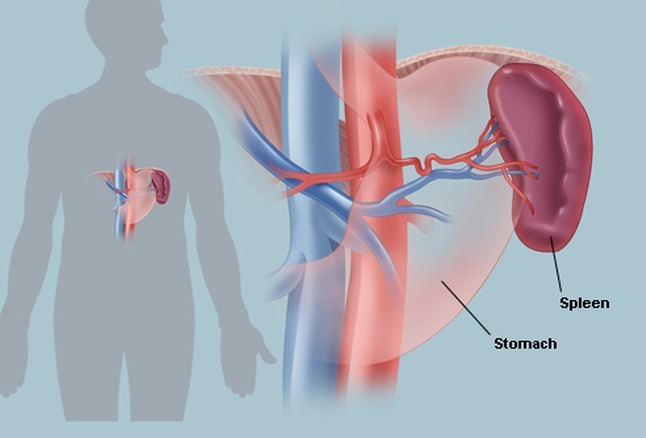
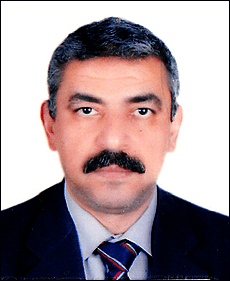
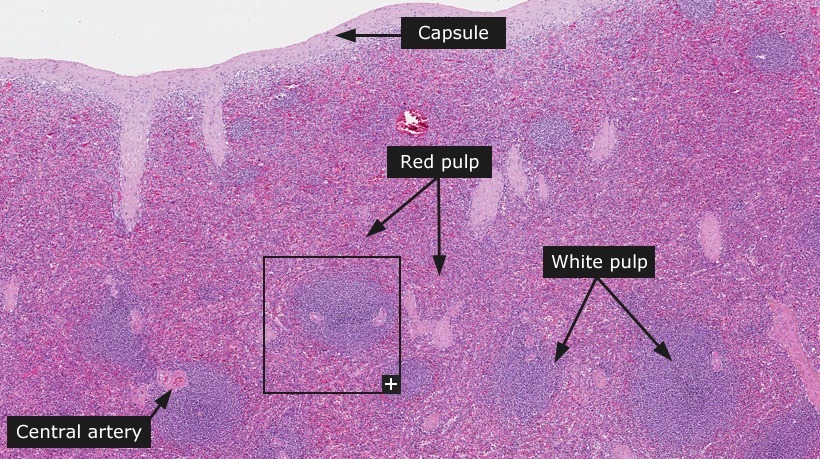
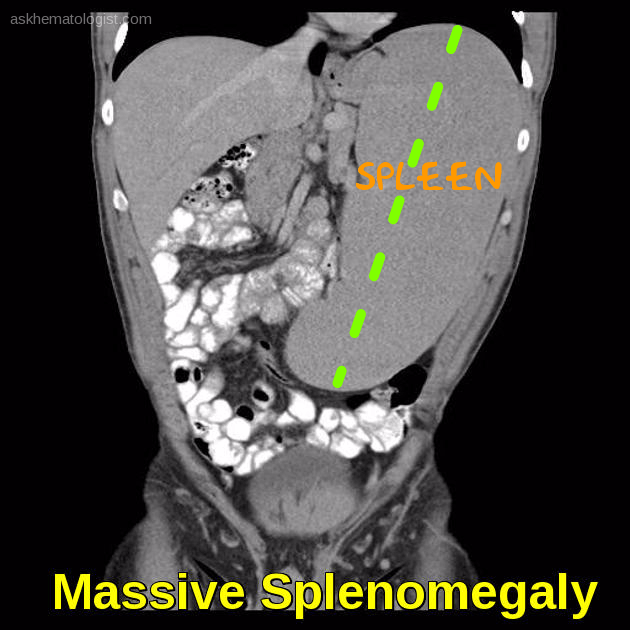

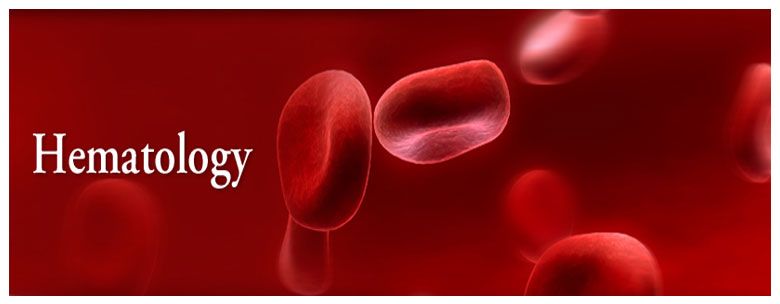

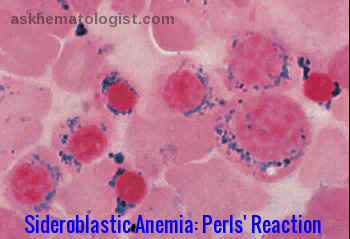
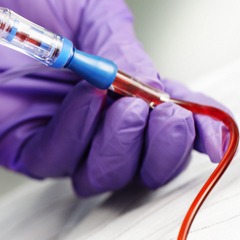
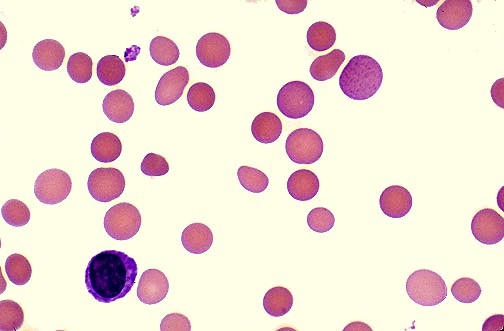

Hey.my baby is 3months old.his spleen size is 8cm .which is 6cm required.is it harmful or dangerous for him???
Hello,
Can you send me his full blood count please (FBC)?
Very nicely written. For new students very nice.
What is the healthiest way to take care of a spleen? Are there foods that boost spleen health? I think my spleen has been exposed to small amounts of mercury over the course of 20 years. Sometimes I am bothered by my spleen and want to find ways to detox. I get that crease over my left eyebrow and have pain sometimes.
Hi,
Small amounts of mercury are present in everyday foods and products, which may not affect your health. Too much mercury, however, can be poisonous. Mercury itself is naturally occurring, but the amounts in the environment have been on the rise from industrialization. The metal can make its way into soil and water, and eventually to animals like fish.
A blood or urine mercury test is used to measure levels in your body.
There’s no cure for mercury poisoning. The best way to treat mercury poisoning is to stop your exposure to the metal. If you eat a lot of mercury-containing seafood, stop immediately. If toxicity is linked to your environment or workplace, you might need to take steps to remove yourself from the area to prevent further effects of poisoning.
If your mercury levels reach a certain point, you may need some chelation therapy. Chelating agents are drugs that remove the metal from your organs and help your body dispose of them. I would suggest reading this article:
Understanding Mercury Poisoning
BW,
I was quite surprised to find there was no discovery in your search engine for hemochromatosis, a blood disorder that i have been affected with for over 30 years.
Hi Stephen,
Please find below the link to the Hemochromatosis post.
Hemochromatosis
BW,
I would like to ask your expertise re: splenomegaly. If the spleen is enlarged but possibly causes pain once in awhile but no laboratory abnormalities in the blood. Can you give me any advice for possible pain control besides Tylenol? is surgery an option despite of once in awhile pain and no serious infections?
Can hematology doctor removed an enlarged spleen?
Hi Christian,
Thank you for your comment.
The spleen is an important immune organ and it shouldn’t be removed unless it is causing significant troubles.
You didn’t mention how large is your spleen and whether or not it is causing you pressure symptoms?
Regarding spleen removal (splenectomy), a surgeon not a hematologist is the one who can do it.
BW,
My spleen size is 14.6 cm ,pcw is 39.1
I’m a male , how much worried should I be?
My liver is also enlarged
Hi Prateek,
Thank you for your comment.
Your enlarged spleen could be secondary to liver disease.
I would suggest seeing a Hepatologist first and check your liver function tests and serum LDH.
BW,
I had my spleen removed 30 years ago when a child due to a rupture. Now that I am older – I am wondering if not having a spleen can effect any of the blood test currently being utilized like the RBC count, the Hemoglobin A1C, etc. I do not want to be treated for a condition I do not have just because being aspleenic will affect test results.
Hi Megan,
Thanks for your comment.
The post splenectomy blood picture includes Howell–Jolly bodies in RBCs, increased hemoglobin level, monocytosis, lymphocytosis, and increased platelet counts.
BW,
Hi
My fiance is 25 years old his spleen size is 16cm he is 193cm and 139kg and he has fatty liver his blood test is normal and his platelets is 135
he hasn’t any symptoms or pain
How harmful or dangerous is it?
Hi Donya,
Thank you for your comment.
Unlike most other organs in our body, the spleen changes in size throughout life — usually in response to illness or injury.
Some viral infections such as infectious mononucleosis, are among the conditions that can lead to an enlarged spleen.
The size of a normal, healthy spleen can vary considerably from person to person.
Sex and height can also affect spleen size.
In general, an adult spleen is about 12 cm long, 7.5 cm wide, and 3.8 cm thick, and weighs about 170 grams.
Women tend to have smaller spleens than men, and taller people tend to have larger spleens than shorter people.
Spleen enlargement is commonly seen in patients with nonalcoholic fatty liver.
I would suggest a follow-up abdominal ultrasound scan after 6 months to reassess his spleen size and a repeat CBC to monitor his platelet count which is slightly below average.
BW,
Greetings,
Can you tell me if it’s possible for my spleen to be the (or one of the) causes of health issues I’ve had off and on between the age of 20 & 45, if I suffered from a car wreck at 15 years old that caused 5 lacerations on my spleen so severe that the internal bleeding gave me paralytic ileus because my digestive system shut down with all the blood that had seeped into my stomach. A gear shift sticking out of the side of a steering wheel hit me in my side when the truck wrecked and we went in a ditch. I went to the emergency room immediately, but they didn’t take it seriously, and I got worse & worse for 3 days until my pediatrician sent me to a better hospital further away. They did imaging and discovered the lacerations on my spleen and internal bleeding, and said that I was within 24 hours of dying due to dehydration from the paralytic ileus and being unable to absorb water through my stomach. I was hospitalized on complete bed rest for 8 days. The first 4 days, a tube was put into my stomach through my nose to drain all of the blood out of it. I seemed to have recovered well after the 8 days and began eating and functioning normally again and was released from the hospital.
I am beginning to wonder if that experience could have damaged my spleen in a way that would contribute to rare, disseminated fungal infections. I had systemic candida and mold colonization in the past, but conquered it with a lot of hard work and discipline and got healthy again. More recently, I picked up a ringworm infection from a massage table at a wellness center and it disseminated and spread inside my head, sinuses, ears, nose, mouth, etc. I’ve been fighting that ever since. Standard immunology tests are all normal. My blood count is extremely low, however – I am extremely anemic. My doctor has been trying to get me to get a blood transfusion because it’s so low. My numbers have improved slightly, however, with antifungal therapy (as fungi also drains iron stores from the body to reproduce itself and create cytoplasm), but the size of my blood cells are getting smaller. They are also all different sizes. My BNP levels were elevated earlier this year but have normalized, and I no longer have edema. I also get myoclonus in my legs at times, but not every day anymore, since antifungal therapy increased. The infection spread behind my sinuses to nerves that lead to my heart and legs.
I was just reading about myoclonus and saw it had some connected to the spleen, and then I saw anemia and infections are also connected to the spleen. I never get bacterial or viral infections though, hardly at all. It’s been 10 years since I even had a cold. I’m primarily susceptible to fungal infections, despite eating a 100% disciplined antifungal diet – no sugar, no flour, nothing fermented, sweet, or fungal, no potatoes, etc., etc. I am awaiting test results for potential CARD9 gene deficiency, as gene mutations run in my family, but I am wondering if my spleen could be a factor too? Could it be somewhat damaged from the car wreck/lacerations, and contributing to my infections and anemia? It’s really rare for dermatophytes (that cause ringworm) to disseminate. Usually, there’s some underlying issue. My microbiome health was really great when this happened. I had no signs of dysbiosis at all when I picked up this infection. So, we suspect there’s some underlying issue, but haven’t found what it is yet, since standard immunology tests look fine.
Thanks for any insight!
Hi Katherine,
Thank you for your comment.
As you are aware, the spleen is an important part of our immune system, which helps the body fight infection.
Your spleen can pick out any unwelcome microorganisms (like bacteria or viruses) in your blood.
We regularly vaccinate patients who had splenectomy or hyposplenism to protect them against overwhelming infections.
However, from your story, I don’t think your partially damaged spleen is the underlying cause of your recurrent and disseminated fungal infections and anemia.
I would suggest checking CD4/CD8 T-cell ratio and consulting a microbiologist and a geneticist.
You should also check your iron/B12/Folate along with Hb electrophoresis to further investigate your anemia.
BW,
I have an enlarged spleen (20cm) and have had all kinds of testing and no one can seem to find out what is causing it. It is causing me a lot of pain and discomfort, my oncologist thinks it could be lymphoma but no test that we have done points 100% to that. My liver specialist does not want my spleen removed and he has done all kinds of testing but we are still unsure of the cause. Do you have any suggestions to what it may be?
Hi Sherri,
I would initially suggest simple blood tests like CBC, blood film, hemolysis screen, LDH, and some molecular studies like JAK2, CALR, and MPL.
If all are normal a bone marrow biopsy could help establish the diagnosis.
Rarely, a storage disease may be the cause of splenomegaly.
BW,
Hello please am having a having a blood problem that anytime my doctor gives me blood it get stuck in my spleen and my spleen size is 14.6 cm ,pcw is 39.1
Hi Ahmed,
Thank you for reaching out to me at AskHematologist.com.
I appreciate your comment regarding your mildly enlarged spleen.
In order to provide you with a more accurate assessment, I kindly request additional information from you.
Could you please provide me with the following details:
1- Your past medical history.
2- Your family history e.g. thalassemia, sickle cell anemia, hereditary spherocytosis.
3- The results of your CBC (Complete Blood Count).
4- Reticulocyte count.
5- Bilirubin level.
6- LDH (Lactate Dehydrogenase) level.
7- Blood film result.
With this information, I will be able to better understand the potential causes of your enlarged spleen and provide you with appropriate guidance.
Best regards,
Hi, I’ve been having large spleen from time to time throughout my adulthood life. First time it was discovered in 2003, then in 2007 and now. I had some UTI infections and abdominal pain this summer and after doing an ultrasound my spleen was normal size around 13cm. The last month I had again issues with UTI and abdominal pain( right side)and a new ultrasound indicated enlarged spleen around 15.5cm could a UTI infection cause enlarged spleen? I also have a non alcoholic fatty liver for many many years. I just don’t understand why it was enlarged in such a sort period. I also had COVID late summer could that be a factor. Most blood tests 6 months and 12 months ago were not showing any blood disease apart from one that indicated an inflammation.
Hi Stratos,
Thank you for reaching out and sharing your concerns.
It is important to note that spleen enlargement can indeed be commonly seen in patients with nonalcoholic fatty liver disease.
To further investigate this, I would recommend checking your liver function tests, including gamma GT.
If the results show abnormal levels, it would be advisable to consult a hepatologist for further evaluation and guidance.
Best wishes,
Dr. M Abdou
I have recently (October 2023) been diagnosed with an enlarged spleen measuring in at 14.6cm.
This was found during a routine ultrasound on my Liver. The ultrasound on my liver also showed that this was enlarged at 17cm. This was diagnosed back in September 2022. I have since had another ultrasound on my spleen which confirmed that it is still enlarged at 14.6cm with little to no change.
I have had 4/5 follow up blood tests, and blood smears, all of which are not abnormal. However, my LFT does show as abnormal to which the doctor suggests NAFLD. I have been referred to a haematologist of which my appointment is in February. What is your opinion on this?
Hi Chris,
Thank you for your comment.
I believe from the information you provided that your mildly enlarged spleen is secondary to your liver disease.
I would suggest having a Fibroscan on your liver and seeing a hepatologist rather than a hematologist.
Best wishes,
Dr. M. Abdou
Thanks for your answer. It turns out that I just possibly have a spleen of that size and the different measurements are due to different ultrasound operators. Clinical haematology and hepatology agreed to that after all coming back normal apart from non alcoholic fatty liver. My spleen was enlarged before I developed that 20 years ago. Thanks again for your suggestions and input